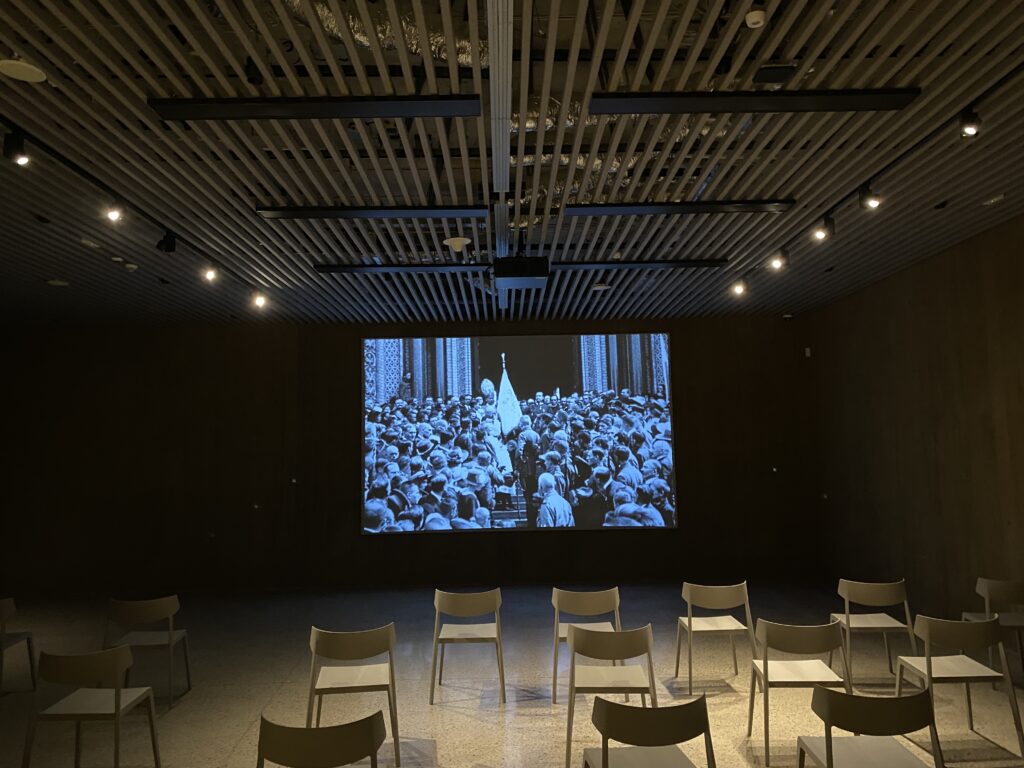Museums bring history, art, and culture to life, offering visitors immersive, memorable experiences. Sound plays a key role here—adding depth to visual displays through narrations, soundscapes, and information that deepen visitor engagement. Advanced audio technologies like Panphonics directional speakers are transforming museum experiences by delivering clear, targeted sound precisely where it’s needed.
Let’s explore how Panphonics speakers are reshaping the way visitors experience exhibits.
What Are Panphonics Directional Speakers?
Panphonics directional speakers provide focused sound projection, directing audio only to specific areas. Unlike standard speakers, which emit sound in all directions, Panphonics speakers use electrostatic technology to create controlled soundscapes that enhance focus. Visitors experience clear, immersive audio without disturbing others.

Key Benefits of Panphonics Directional Speakers in Museums
- Targeted Audio Placement for Enhanced Focus
Panphonics speakers allow precise audio placement, directing sound to individual exhibits and minimising noise overlap. By using targeted sound, museums create a more immersive experience, capturing visitors’ attention without distractions. - Personalised Engagement for Every Visitor
Each museum visitor has unique interests. With Panphonics speakers, museums can deliver personalised audio experiences, triggered by proximity sensors or device connectivity. This flexibility lets visitors explore exhibits at their own pace, focusing on what interests them most. - Immersive Soundscapes that Transport Visitors
Panphonics speakers are perfect for recreating specific atmospheres. Whether it’s the bustling sounds of a historical marketplace or a tranquil rainforest, directional sound adds depth to exhibits, enhancing the emotional impact of each display. For more on sound’s role in enhancing spaces, see our post on the impact of sound design. - Reduced Noise Pollution, Better Visitor Experience
In busy museum environments, overlapping audio can be distracting. Panphonics speakers focus sound within defined zones, minimising ambient noise and ensuring a seamless experience. This clear separation makes it easy for visitors to engage fully without interference from neighboring exhibits. - Artefact Protection through Vibration-Free Sound
Traditional speakers can create vibrations that may affect delicate artefacts. Panphonics directional speakers avoid this risk by containing sound within specific areas, protecting artefacts while enhancing the visitor experience.
See Panphonics in Action: Museum Józefa Piłsudskiego
Panphonics speakers are already enriching experiences at various museums. For example, the Muzeum Józefa Piłsudskiego uses Panphonics technology to enhance its storytelling, providing visitors with a focused, immersive journey through history.

Incorporating Panphonics directional speakers helps museums deliver targeted, immersive, and noise-free experiences that captivate visitors and preserve artifacts. As museums continue to evolve, innovative sound solutions like Panphonics will play a crucial role in enhancing engagement and building deeper connections for all who visit.
Want to understand better how directional speakers can add value for your company?
You can check out our local distributor list or get in contact directly with us if you would like to become an official Panhponics distributor.
